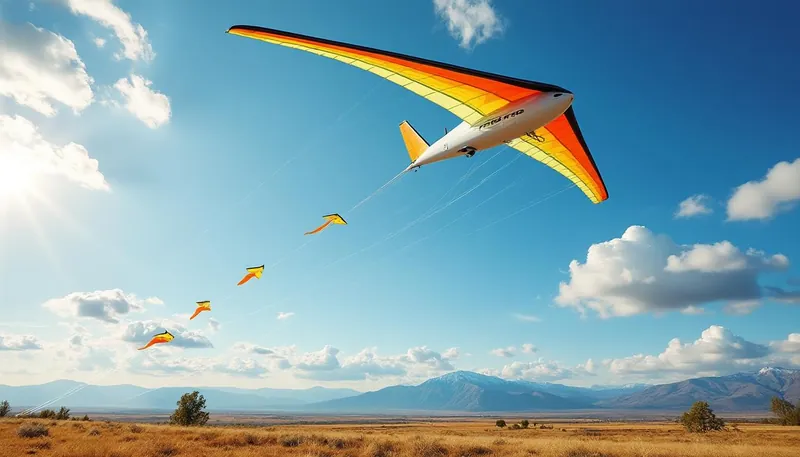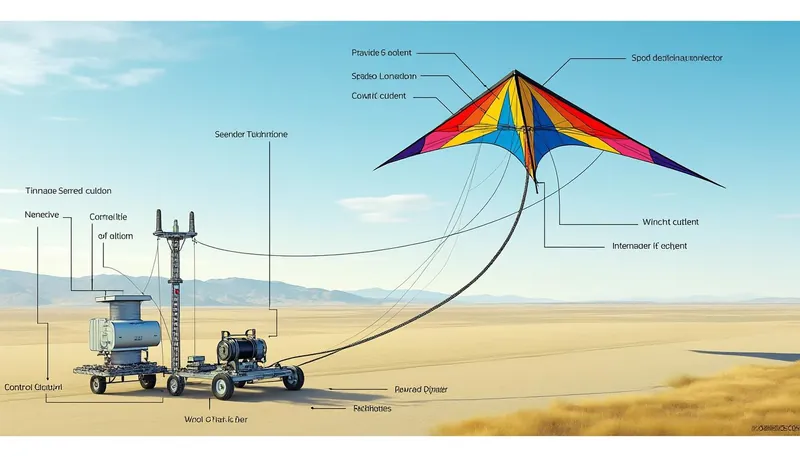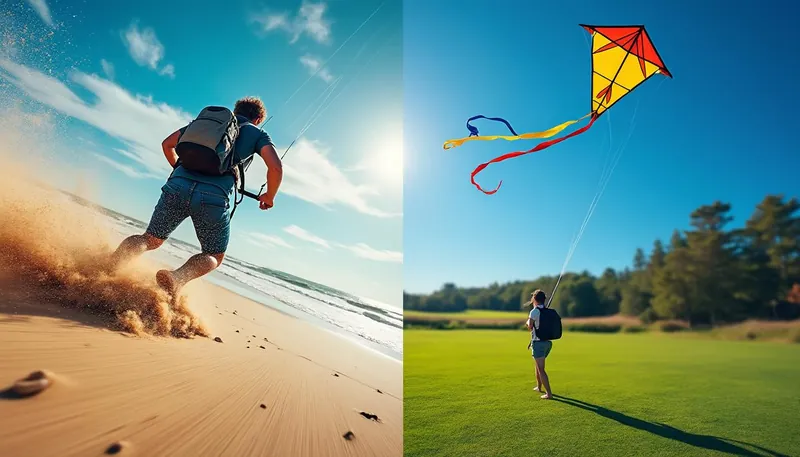As the world pivots towards a more sustainable future, the need for innovative energy solutions intensifies. Among the myriad of approaches being explored, traction kites are at the forefront of revolutionizing energy generation. These aerial devices harness the consistent and potent winds found at higher altitudes, converting the kinetic energy of the wind into electrical power. Unlike traditional land-based wind turbines that often struggle with efficiency due to turbulent atmospheric conditions, traction kites soar to great heights, capturing stronger jet streams and offering a cleaner alternative to fossil fuels. The principles governing their functionality are rooted in the physics of lift and drag, creating a synergy between design and technology that could reshape the energy landscape of tomorrow.
This fascinating technology encompasses various components, from the kite itself to sophisticated control systems designed to optimize energy capture. In addition, the environmental footprint of traction kites is significantly lower than traditional wind energy systems, potentially allowing for extensive energy harnessing with minimal disruption to ecosystems. As research and development continue, the promise of traction kites grows even more appealing, offering a glimpse into a world where energy is abundant, clean, and renewably sourced from the skies.
However, the road to mainstream adoption of traction kite systems is not without challenges. Regulatory frameworks must evolve to accommodate the integration of airborne wind energy systems into existing airspace, addressing safety and operational concerns. Additionally, the commercial viability of these systems hinges on technological advancements and societal acceptance, two factors that will play pivotal roles moving forward. The fusion of innovation with practicality is where traction kites emerge not just as a concept, but as a dynamic solution driving the renewable energy revolution.
In essence, traction kite technology stands not merely as an alternative but as a legitimate contender within the rapidly evolving renewable energy landscape, illustrating the heights we can reach when creativity meets necessity.
In brief:
- ⚡ Traction kites convert wind energy into electricity by utilizing stronger winds at higher altitudes.
- 🏗️ These systems utilize innovative designs and components, including tethered kites and ground stations.
- 🌍 The environmental impact of traction kites is significantly lower than that of traditional wind turbines.
- ⚖️ Regulatory and commercial challenges remain barriers to widespread adoption.
- 🔍 Ongoing advancements in technology will determine the future viability of kite power systems.
Understanding the Science Behind Traction Kite Power Generation
At the core of how traction kites generate power is the sophisticated interaction of physics, particularly involving concepts like lift and drag. The basic principle of traction kite systems revolves around converting kinetic energy into mechanical energy, which is then transformed into electrical energy. When a kite is launched and flies in a controlled path through the air, the wind exerts a lifting force that raises the kite against gravity.
The Physics of Lift and Drag
The aerodynamic forces of lift and drag are essential to the performance of traction kites. Lift is generated as air flows over and under the kite’s surfaces, creating a pressure differential that elevates the kite. Drag, on the other hand, opposes the kite’s forward motion, acting as a counterbalance to thrust forces. The successful operation of a traction kite depends on achieving an optimal balance between these two forces, greatly influenced by various design elements:
- 🪁 Kite Shape: The design and shape of the kite influence its aerodynamic properties.
- 🌬️ Wind Conditions: Higher wind speeds contribute to increased lift and energy generation.
- 🔄 Flight Path: By flying in fluttering patterns, kites can maximize power output during energy capture phases.
Once in the air, kites can perform “power strokes” where the drag force is utilized to tug on a tether connected to a ground station. During these phases, energy is generated as the kite pulls on the tether, causing attached mechanisms—often a generator—to convert this mechanical energy into electrical energy.
Wind Altitude Impact: Another critical factor influencing traction kite power generation is the altitude at which they operate. The wind patterns in the atmosphere are often stratified, meaning that higher altitudes typically experience faster and more consistent winds. By taking advantage of these conditions, traction kites can not only maximize energy output but also operate more efficiently than traditional ground-based wind turbines. The increase in wind speed with altitude can provide up to 90% greater energy potential compared to turbines positioned closer to the ground.

Components of a Traction Kite Power System
The effectiveness of traction kite systems lies in their well-designed components, which play unique roles in power generation. Each part—ranging from the kite itself to the control mechanisms—contributes to the overall efficiency and functionality of the system. Here’s a closer look at these essential components:
Tethered Kites: Rigid Wings vs. Soft Kites
When it comes to the airborne structures utilized in traction kite systems, developers typically choose between rigid wings and soft kites. Both designs have unique characteristics that influence performance:
- 🛩️ Rigid Wings: Often designed to resemble small aircraft, these structures offer enhanced aerodynamic efficiency and stability. Their ability to maintain shape allows for precise control during flight. Examples include systems developed by Ampyx Power.
- 🌬️ Soft Kites: Flexible and lightweight, soft kites are typically easier to manufacture. While they may sacrifice some aerodynamic efficiency, their adaptability and cost-effectiveness make them appealing. SkySails utilize this design in their energy generation systems.
Ground Station Architecture: Two Prominent Approaches
The ground station is crucial as it anchors the kite and houses the essential equipment for energy conversion. Two notable designs have emerged, shaping the way kite power systems operate:
- 🔄 KiteGen’s Rotating Arm Design: In this configuration, the kite’s pull rotates a connected arm, which drives a generator to produce electricity.
- 🏗️ Makani Power’s Winch System: This design maintains a fixed base from which the kite’s flight path is controlled. By adjusting the kite’s elevation and direction, this system optimizes energy capture throughout its cycles.
Energy Generation Mechanisms and Their Efficiency
Traction kites utilize several mechanisms to convert the wind’s kinetic energy into usable electricity. The process and technology chosen can significantly impact the overall system performance. Let’s delve into three primary approaches that have gained traction in the industry:
Ground-Based Generation: KiteGen’s Approach
This configuration uses a cyclic approach where the kite flies in a specific pattern, minimizing downtime between energy capture phases. During “power strokes,” the kite’s movement pulls on the tether, turning a drum connected to a generator.
- 🌟 This method enables consistent electricity generation with relatively simple mechanics.
- ⚙️ However, maintenance of the tether and the wear from repeated cycles poses operational concerns.
Onboard Generation Systems
Alternatively, onboard turbine generators, such as those employed by Makani Power’s designs, mount small wind turbines directly onto the wing structure. These turbines generate electricity while the kite performs its aerial maneuvers.
- ☀️ This approach can enhance efficiency but adds weight and complexity, which may affect overall system reliability.
Pumping Kite Systems: The Hybrid Approach
A system like Ampyx Power’s PowerPlane combines the benefits of both ground-based and airborne generation. Its rigid wing generates energy as it pulls on the tether while also allowing for lower drag in the retraction phase.
- ⚡ This hybrid method has shown promise as it optimizes energy capture while ensuring a smooth cycle of operation.
| Energy Mechanism | Advantages | Challenges |
|---|---|---|
| Ground-Based Generation | Simple mechanics and continuous operation | Tether wear and maintenance issues |
| Onboard Turbines | Higher energy capture efficiency | Increased weight and complexity |
| Pumping Kite Systems | Optimizes both drag and energy output | Operational complexity |

Environmental Impact and Future Considerations
As we seek sustainable energy solutions, one of the most compelling aspects of traction kites is their comparatively minimal environmental impact. Unlike traditional wind turbines, which can disrupt ecosystems, traction kites typically require less physical infrastructure and have a smaller land footprint. This aspect is particularly vital in regions where land is limited, or conservation is a priority.
Land Use Efficiency
Land use efficiency is a critical consideration for any energy generation system. In fact, a single traction kite setup can produce as much power as a larger conventional turbine while taking up significantly less space. This feature resonates well with developers aiming to balance energy needs with environmental conservation.
- 🌿 Smaller Land Footprint: Reduce disruption to ecosystems.
- 🌍 Visual Impact: Airborne systems are often less visually intrusive than large turbines.
- 🦅 Wildlife Considerations: Lower risks of bird and bat collisions generally compared to traditional setups.
Regulatory Frameworks
Nevertheless, integrating traction kites into existing airspace presents challenges. Notably, regulatory bodies must create frameworks that ensure the safety of both airborne energy systems and traditional aviation:
- ⚠️ Airspace Management: Establishing zones to manage potential collisions.
- 📈 Safety Protocols: Developing emergency response procedures.
- 🚦 Nighttime Visibility: Implementing requirements for enhanced visibility.
What are traction kites?
Traction kites are large kites designed to harness wind power, converting kinetic energy into usable electricity. They can reach higher altitudes where wind speeds are stronger and more stable.
How do traction kites generate power?
Traction kites utilize aerodynamic forces of lift and drag while flying in controlled patterns to pull on a tether connected to a generator, which converts mechanical energy into electricity.
What advantages do traction kites offer over traditional wind turbines?
Traction kites can access higher and more consistent wind speeds, have a smaller environmental footprint, and require less land compared to traditional wind turbines.
What are the main components of a traction kite system?
The main components include the kite (either rigid wings or soft kites), the tether, the ground station, and the control systems that optimize flight paths.
What challenges do traction kite systems face?
Challenges include regulatory hurdles related to airspace integration, ensuring system reliability, and scalability for wider commercial deployment.


